Apistogram Ramirezi: description and types, content and breeding
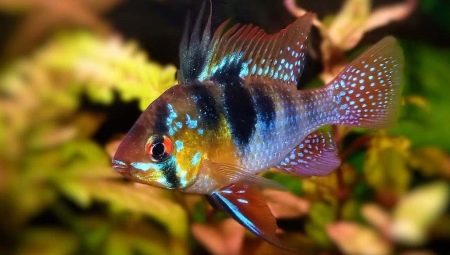
Many experienced and novice aquarists are attracted by ornamental fish with an unusual and bright color, since they can become a real decoration of tanks, even in a single copy. Among such representatives of the aquatic fauna, it is worth highlighting Apistogram Ramirezi is an aquarium fish that deserves attention in light of its memorable appearance.
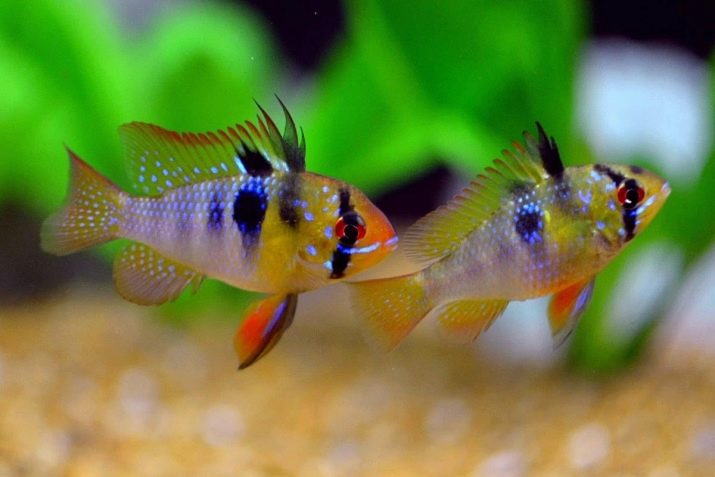
Peculiarities
Among the representatives of cichlids, there are miniature aquatic inhabitants, one of which is the Ramirezi apistogram. The homeland of this fish is considered to be the Amazon and Orinoco, as well as nearby reservoirs with a minimum current. This fish is known by various names, including the butterfly chromis, the butterfly cichlid and the Latin name Microgeophagus Ramirezi. Such a decorative individual is guaranteed to become a decoration of the aquarium, in addition, in terms of maintenance and care, it stands out for its unpretentiousness, which means that it is suitable for growing in closed tanks not only by experienced, but also by novice aquarists.
The body of the fish is oval in shape, an adult in length reaches sizes in the range of 5 to 8 centimeters, but in an aquarium these parameters will be at the lower border. As for the color, the Ramirezi apistogram can be green, blue, and also yellowin addition, the body of the fish is usually covered with a shiny dot pattern. The head and abdomen are covered with black stripes, and the pupils will be colored in red or black Colour depending on the variety.
According to the description of behavior, in home aquariums, the fish demonstrates a friendly and peaceful disposition, however, during breeding, it can aggressively defend its rights to the territory, especially for males. She is not prone to attacks, she is not interested in decorative cultures that serve as decorations for the tank.

Butterfly fish, like other cichlids, can suffer from several ailments:
- iridovirus;
- lymphocytosis;
- poisoning with harmful components from the aquatic environment - chlorine, ammonia.
In such cases the aquarist is advised to reconsider the conditions of keeping the river inhabitant, if necessary, use specialized preparations. In addition to the above ailments, the apistogram may suffer from obesity, as well as inflammation of the gastrointestinal tract, in light of which its diet should be correct. In general, the life expectancy of fish is about 4 years, this indicator will largely depend on the temperature of the water in the reservoir.

Varieties
Today, for breeding in tanks, aquarists can acquire a natural species of fish, as well as varieties that have been artificially bred by breeders. Among the main representatives, it is worth highlighting the most popular species.
Apistogram Ramirezi (natural view)
An individual with good immunity, having a red or yellow body color, during the breeding season, a characteristic blue appears in the color of males and females, while the abdomen of the fish will be crimson or orange, and the fins are transparent.
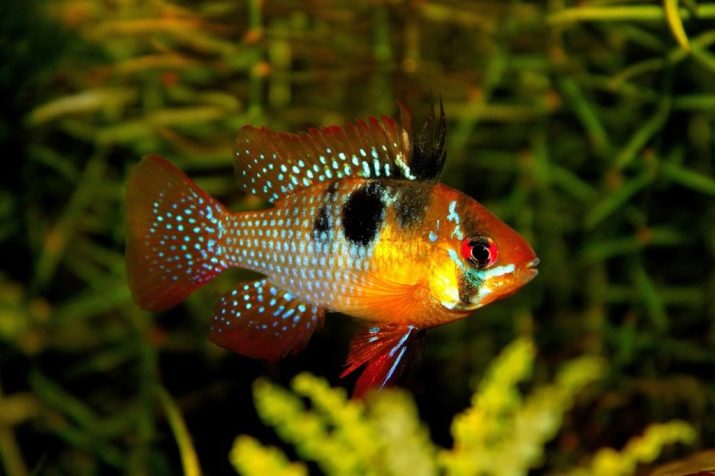
Electrician blue
A beautiful ornamental fish, notable for its turquoise color and red front part of the body. The fins of individuals of this species have a neon tint. The brightness of the electric blue color directly depends on the conditions of detention, as well as the temperature and hardness of the aquatic environment. On average, a selection species can live in an aquarium for about two years. This species is considered the most sought after by both beginner and experienced aquarists.
Distinguishing the female from the male will be easy, since females have a pronounced genital deflection on the body... Usually, adult fish reach a size of 2-2.5 centimeters.
When keeping an electrician blue, it is worth knowing that there should be more males in the flock, in addition, at least 30 liters of water will be required for one aquatic inhabitant. The species gets along well with other aquarium inhabitants, however, the neighborhood with shrimps will be extremely undesirable.
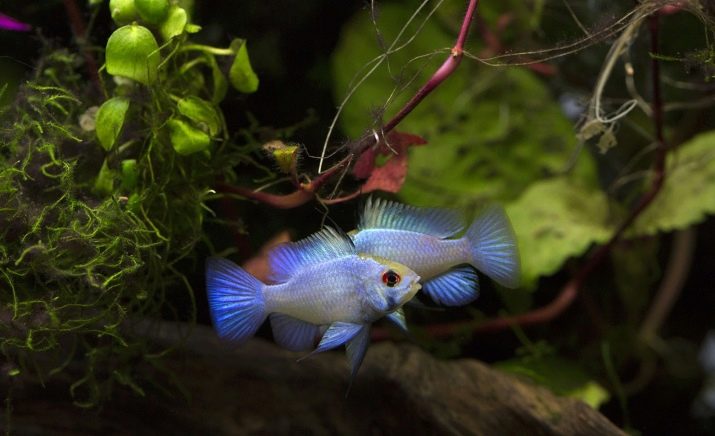
Ramirezi Gold
This species from the cichlid family is often called golden, since the fish have a lemon color of the body with a turquoise tint on the fins and sides. The difference in the appearance of the male from the female will become the first has a red dorsal fin.
And also a remarkable external feature of this species of fish is black color of the pupils.
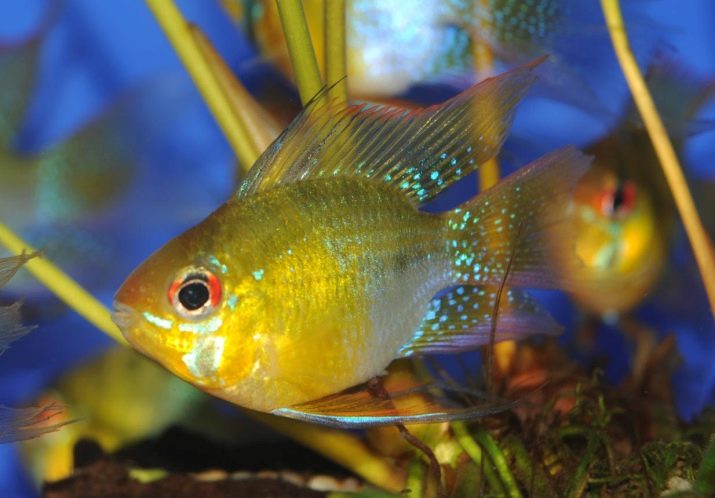
Apistogram Ramirezi balloon
An attractive individual with a shortened body and rounded abdomen. The fish is a natural species, found in the rivers of Bolivia, Colombia, Venezuela. On the body of individuals there are black stripes with an uneven arrangement, on the fins along the edge and along the dorsal part there is a red or pink stripe. For one individual, 20 liters of liquid in the aquarium will be enough.
For maintenance, it is recommended to use dense ornamental vegetation and minimally hard water.
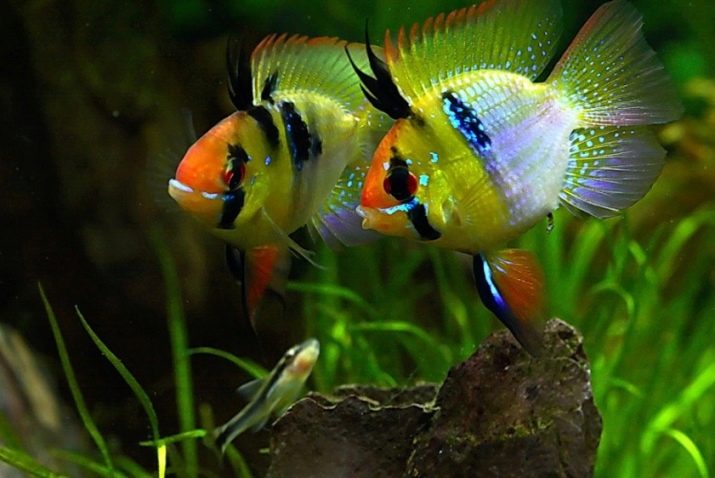
Veil apistogram
The species is obtained artificially, the color of representatives may include several colors. Veil fins deserve special attention, in addition, neon blotches may be present on the body of fish. This is a predatory fish, the color of females is usually brighter. The specimen is doing well in closed tanks, prefers to grow in containers with good filtration, as well as with the presence of vegetation.
Alone, the veil apistogram will die pretty quickly, so this species should be kept in schools of at least 10 small fish.
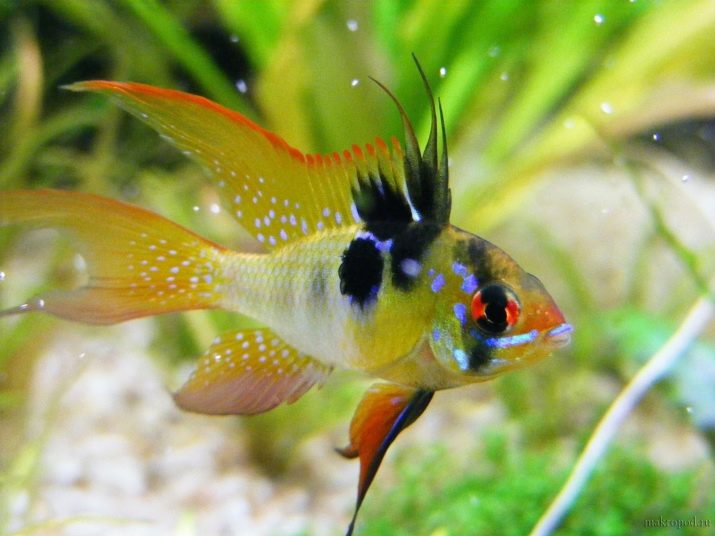
Compatibility
Ramirezi's apistogram stands out for its livability with almost all decorative inhabitants of aquariums, individuals are reluctant to burrow into the ground, therefore, they do not damage plants. It is recommended to keep them with representatives of the aquatic fauna, which have a similar peaceful disposition. As neighbors, you can stay at:
- swordsmen;
- neons;
- catfish;
- rasbora.
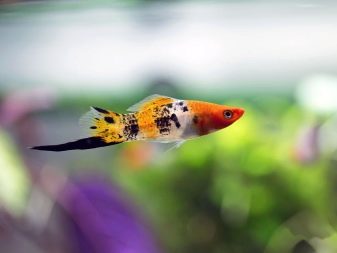
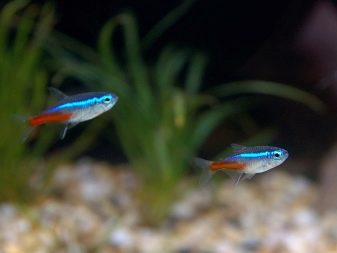
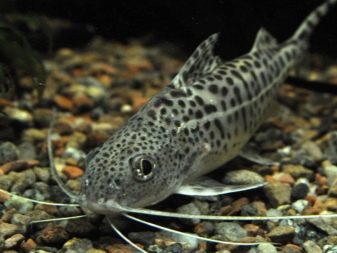
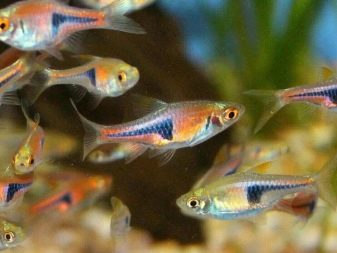
Neighborhood with large fish and shrimps should be discarded.
Growing conditions
It is necessary to keep the apistogram in tanks with a volume of at least 30 liters, provided that there are no more than two fish. Usually, to emphasize the attractiveness of individuals, aquariums are decorated with tropical flora. You can decorate the container with alder cones, almond leaves - such features will make the aquatic environment close to that in which this species lives in natural conditions. It is recommended to fill up a sandy substrate at the bottom, in addition, it is allowed to use driftwood and various branches, stones for shelter or spawning.
Among the floating plants recommended for keeping together with representatives of the genus cichlids, the following options can be considered:
- salvinia;
- hydrocotyl;
- duckweed.


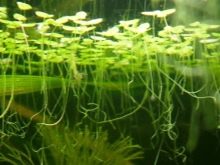
In addition, ferns, vallisneria, hornwort can be rooted in the tank. Green spaces will be a priority, but you should refrain from using red-leaved species of aquarium crops, since they do not harmonize in appearance with butterfly fish.
The temperature of the water in the tank should be maintained at + 26 ... 30 ° С, while the acidity should be in the range from 4 to 7.5 pH, and the hardness, suitable for keeping apistograms, will vary within 6-15 dH. It is possible to determine that the water in the aquarium has not warmed up enough by the behavior of the fish - in cool liquid they are susceptible to various diseases, in addition, their life expectancy will be shorter. Installing aerators and filters in your aquarium will be a must. It is recommended to change about a third of the total water volume every week.
As for the mandatory care measures, the following nuances must be observed for keeping butterfly fish:
- test water quality;
- clean the soil with a siphon;
- make sure that the fish diet is as balanced as possible.
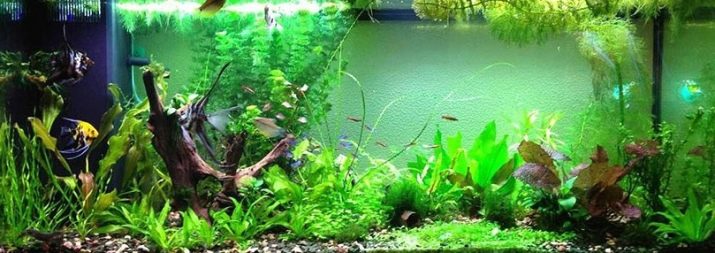
Feeding rules
This type of ornamental fish is prone to overeating, so feeding should be strictly dosed, individuals should be given enough feed so that they can consume it in a maximum of 5 minutes. After a lapse of time, all remaining particles should be removed. In general, the Ramirezi apistogram is an omnivorous individual, therefore it is allowed to feed it with the following types of food:
- alive (bloodworms, microworms, daphnia, cyclops);
- vegetable (dandelions, cabbage, cucumbers);
- dry - it is best to use a commercial product as a supplement to the main diet.
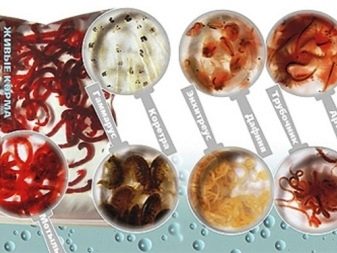
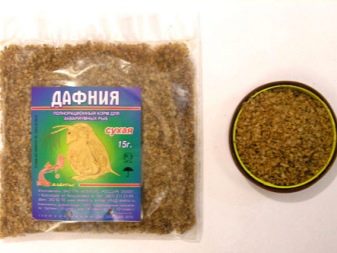
Sex differences
Fish of this breed are considered sexually mature already at the age of six months, as a rule, by this time their size is 3 centimeters. Males will differ from females in the following features:
- males will always be larger;
- their dorsal fin will be long with a pointed end;
- in males the abdomen is colored orange, in females it is pink or crimson;
- males express their readiness for spawning with a brighter color during this period.
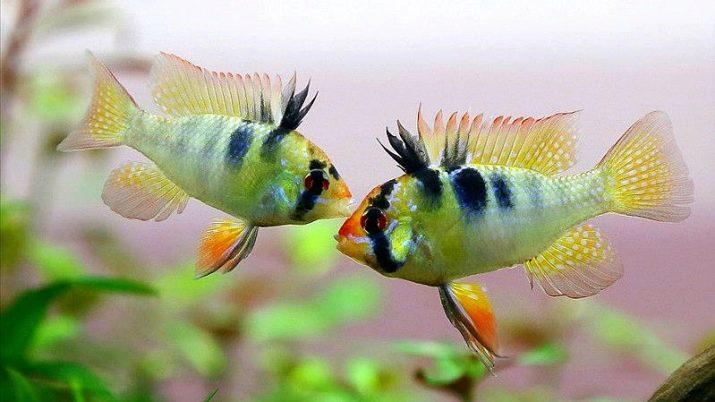
Reproduction
It will be possible to dilute the Ramirezi apistogram at home only in spacious aquariums, the volume of which will be more than 40-50 liters. To stimulate fish spawning and fry formation, the aquarist is advised to frequently change the aquatic environment in the tank and increase the normal temperature of the liquid by a few degrees.
Determine that the individuals contained in the aquarium are ready for spawning, it is possible by the aggressive behavior of the males, who will arrange frequent fights concerning the division of the territory of the tank. Self-selection of a pair in the case of a butterfly fish will not bring the desired result, since it is important for this aquatic inhabitant to make a choice personally, without human participation. Usually, in a school of 6-10 fish, at the onset of puberty, pairs will form without the additional intervention of the aquarist.
In order for spawning to be successful, it is recommended to create favorable conditions in the aquarium, namely:
- take care of the presence of dense greenery;
- ensure the presence of flat surfaces for the fish;
- keep lighting to a minimum.
The water should be soft and higher in temperature by 2-3 degrees.
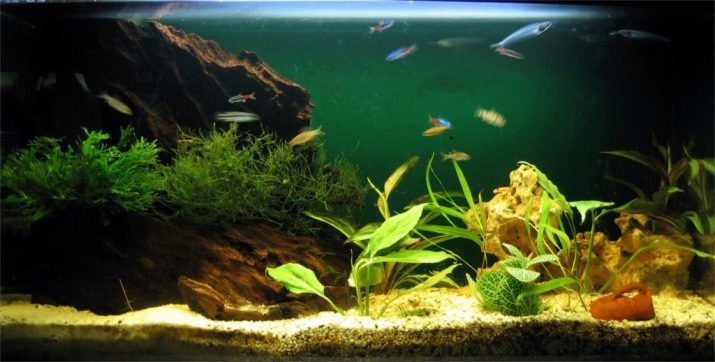
The female has reduced immunity during this period, therefore cleanliness in the aquarium during this period should be in the first place... Usually, the apistogram lays from 50 to 400 eggs in one spawning, using flat surfaces in the aquarium or the shelters they like.
In aquarium conditions, butterfly fish may lose their parental instincts, then there is a risk that the eggs will be eaten by their parents. To prevent such a development of events, fertilized eggs can be transferred to the incubator in advance, as a rule, under optimal conditions, the larvae will be born in 2-4 days. However, in most cases, the male protects his offspring until the appearance of fry.
As soon as the fry hatch, the water temperature in the aquarium should be lowered. The growing generation is fed with special starter feed for fish, as well as with the usual live and plant feed, which is used for adults. These can be microworms, ciliates and brine shrimp.
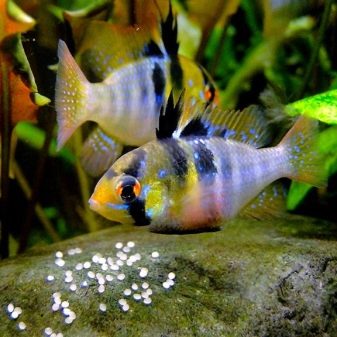

The following video will tell you about the content and breeding of the Ramirezi apistogram.








